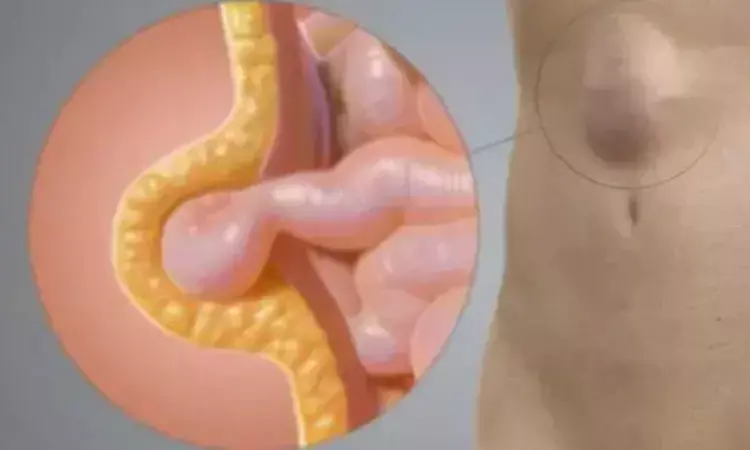- Home
- Medical news & Guidelines
- Anesthesiology
- Cardiology and CTVS
- Critical Care
- Dentistry
- Dermatology
- Diabetes and Endocrinology
- ENT
- Gastroenterology
- Medicine
- Nephrology
- Neurology
- Obstretics-Gynaecology
- Oncology
- Ophthalmology
- Orthopaedics
- Pediatrics-Neonatology
- Psychiatry
- Pulmonology
- Radiology
- Surgery
- Urology
- Laboratory Medicine
- Diet
- Nursing
- Paramedical
- Physiotherapy
- Health news
- Fact Check
- Bone Health Fact Check
- Brain Health Fact Check
- Cancer Related Fact Check
- Child Care Fact Check
- Dental and oral health fact check
- Diabetes and metabolic health fact check
- Diet and Nutrition Fact Check
- Eye and ENT Care Fact Check
- Fitness fact check
- Gut health fact check
- Heart health fact check
- Kidney health fact check
- Medical education fact check
- Men's health fact check
- Respiratory fact check
- Skin and hair care fact check
- Vaccine and Immunization fact check
- Women's health fact check
- AYUSH
- State News
- Andaman and Nicobar Islands
- Andhra Pradesh
- Arunachal Pradesh
- Assam
- Bihar
- Chandigarh
- Chattisgarh
- Dadra and Nagar Haveli
- Daman and Diu
- Delhi
- Goa
- Gujarat
- Haryana
- Himachal Pradesh
- Jammu & Kashmir
- Jharkhand
- Karnataka
- Kerala
- Ladakh
- Lakshadweep
- Madhya Pradesh
- Maharashtra
- Manipur
- Meghalaya
- Mizoram
- Nagaland
- Odisha
- Puducherry
- Punjab
- Rajasthan
- Sikkim
- Tamil Nadu
- Telangana
- Tripura
- Uttar Pradesh
- Uttrakhand
- West Bengal
- Medical Education
- Industry
Updated guidelines for closure of abdominal wall incisions by European and American Hernia Societies

Netherlands: European and American Hernia Societies have released an updated guideline for the closure of abdominal wall incisions. The updated guideline, published in the British Journal of Surgery may help surgeons in selecting the optimal approach and location of abdominal wall incisions.
An incisional hernia is a common complication of abdominal wall incision. For the development of incisional hernia, surgical technique is an important risk factor. The guidelines were developed with the aim to provide recommendations to decrease the incidence of incisional hernia.
The guidelines group consisted of surgical specialists, certified guideline methodologies, a biomedical information specialist, a certified guideline methodologist, and patient representative. For developing the guideline, a systematic literature search was performed of online databases on 22 January 2022. The Scottish Intercollegiate Guidelines Network instrument was used to examine systematic reviews and meta-analyses, RCTs, and cohort studies. The certainty of the evidence was appraised using the GRADE approach (Grading of Recommendations, Assessment, Development and Evaluation).
The authors suggest the use of laparoscopic surgery when safe and feasible to reduce the risk of incisional hernia and surgical-site occurrence. It is also suggested to avoid a midline incision for laparotomies and specimen extraction sites to reduce incisional hernia risk.
It is suggested to suture the fascial defect for trocar sites of 10 mm or larger, particularly after SILS and for trocars located at the umbilical site. For closure of elective midline incisions, the authors suggest a continuous small-bites suturing technique with a slowly absorbable suture.
The authors suggest considering prophylactic mesh augmentation after elective midline laparotomy to reduce the risk of incisional hernia. The use of a permanent synthetic mesh is suggested for prophylactic mesh augmentation.
Onlay or retromuscular implantation is suggested when using a prophylactic mesh. No recommendation can be made regarding prophylactic mesh augmentation in emergency laparotomy.
The authors stated that no recommendation can be made for or against the use of postoperative binders owing to the lack of data on their effect on incisional hernia or burst abdomen. Also, no recommendation on the restriction of activity after open abdominal surgery can be made owing to lack of evidence.
"More research is needed to draw definitive conclusions on potential benefits of mesh augmentation in patients undergoing emergency midline laparotomy and to identify subgroups of patients who might benefit from prophylactic mesh placement," the authors wrote.
Reference:
Eva B Deerenberg, Nadia A Henriksen, George A Antoniou, Stavros A Antoniou, Wichor M Bramer, John P Fischer, Rene H Fortelny, Hakan Gök, Hobart W Harris, William Hope, Charlotte M Horne, Thomas K Jensen, Ferdinand Köckerling, Alexander Kretschmer, Manuel López-Cano, Flavio Malcher, Jenny M Shao, Juliette C Slieker, Gijs H J de Smet, Cesare Stabilini, Jared Torkington, Filip E Muysoms, Updated guideline for closure of abdominal wall incisions from the European and American Hernia Societies, British Journal of Surgery, 2022;, znac302, https://doi.org/10.1093/bjs/znac302
Dr Kamal Kant Kohli-MBBS, DTCD- a chest specialist with more than 30 years of practice and a flair for writing clinical articles, Dr Kamal Kant Kohli joined Medical Dialogues as a Chief Editor of Medical News. Besides writing articles, as an editor, he proofreads and verifies all the medical content published on Medical Dialogues including those coming from journals, studies,medical conferences,guidelines etc. Email: drkohli@medicaldialogues.in. Contact no. 011-43720751


